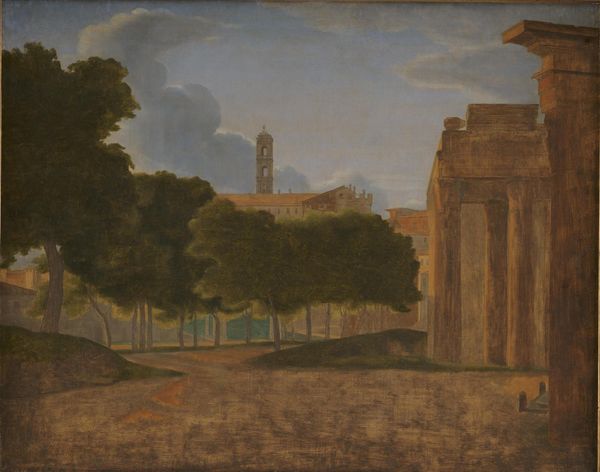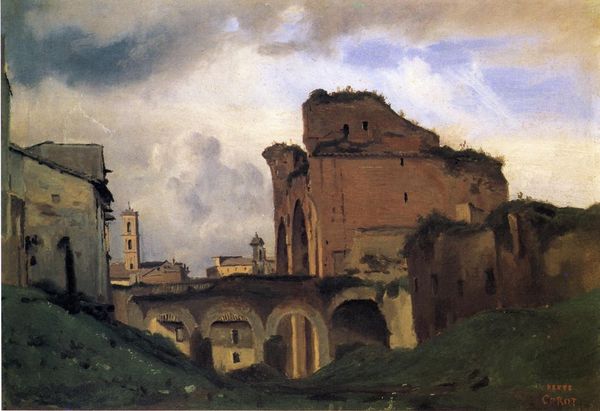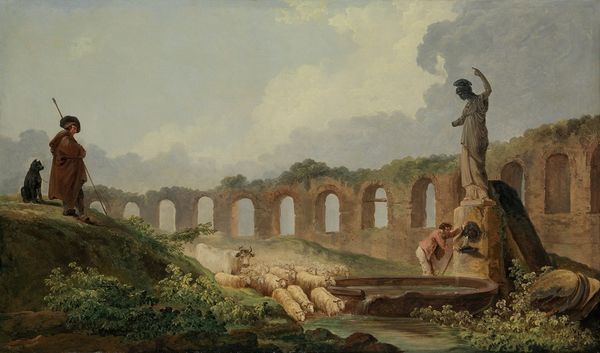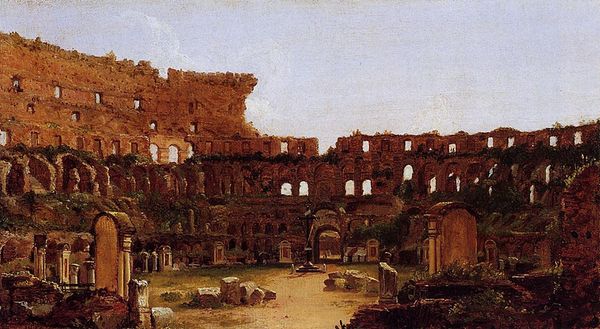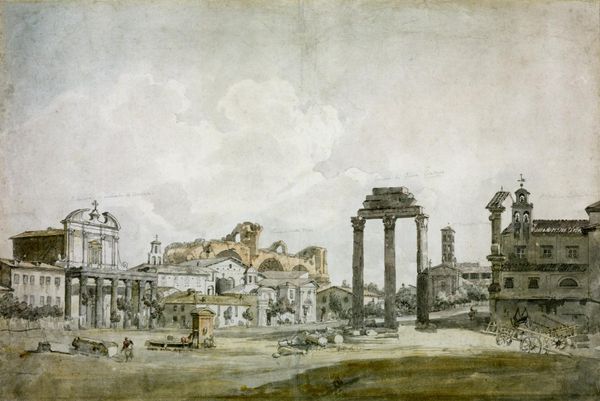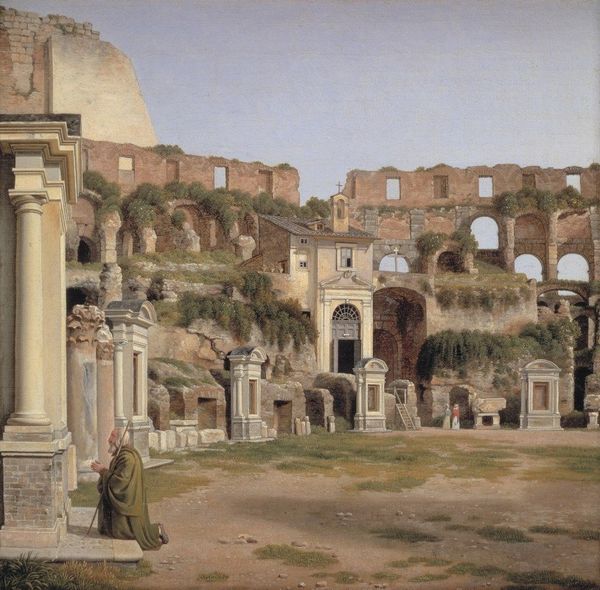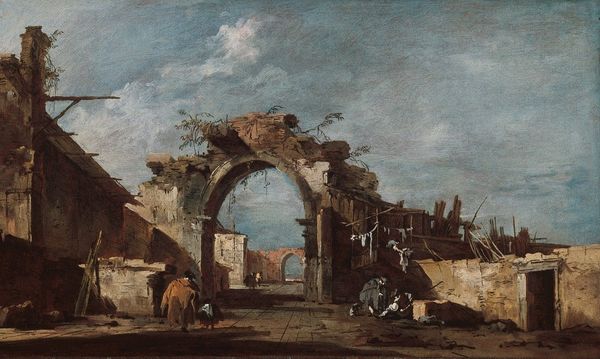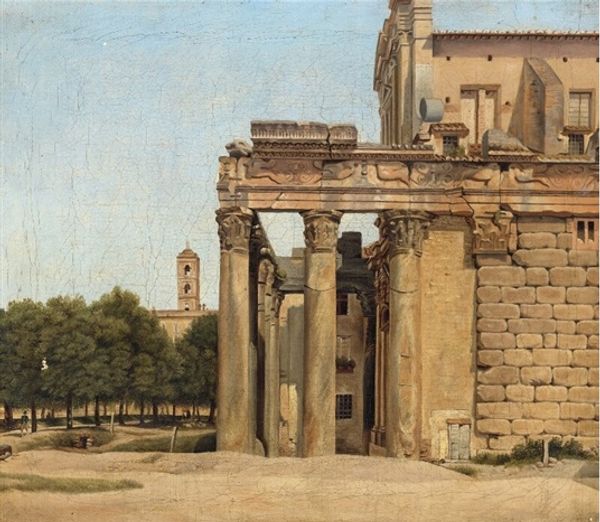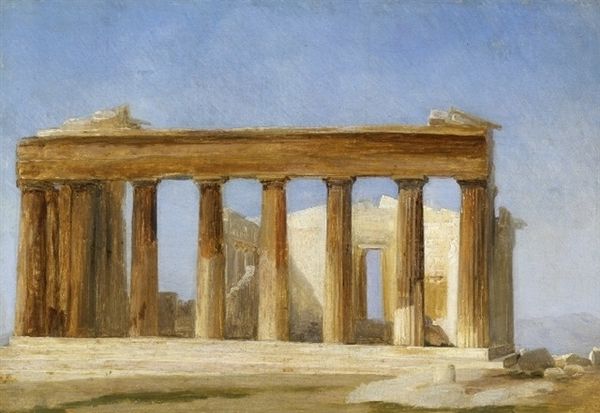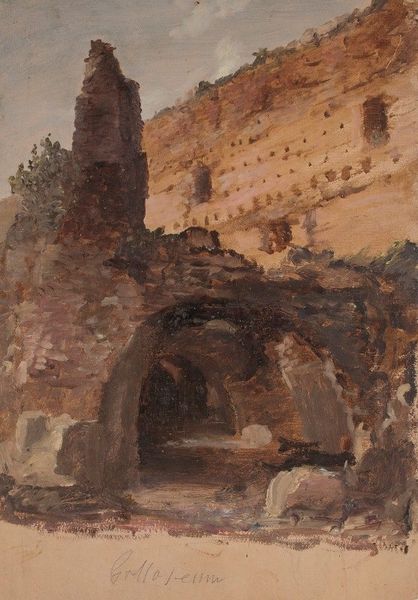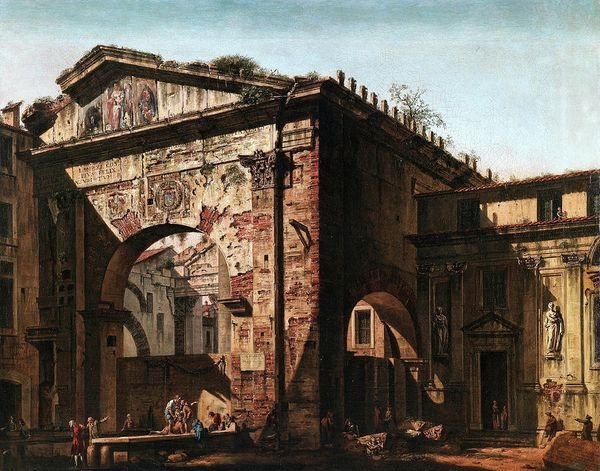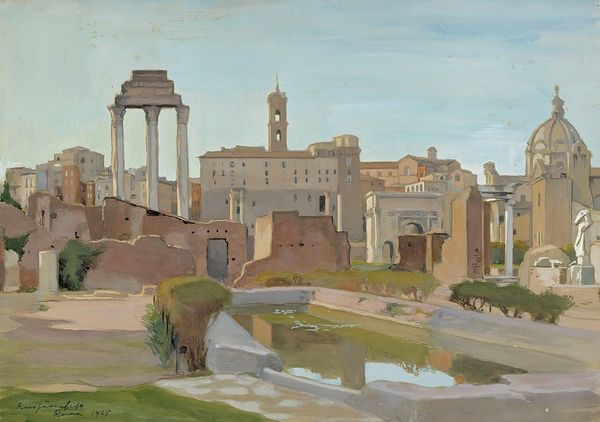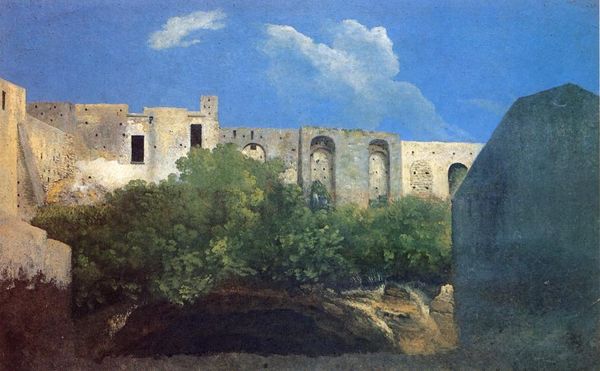
plein-air, oil-paint
#
plein-air
#
oil-paint
#
landscape
#
oil painting
#
romanticism
#
cityscape
Dimensions: 24 x 34 cm
Copyright: Public domain
Camille Corot made this oil on canvas painting, Basilica of Constantine, in the 19th century. Corot was a landscape painter who often worked "en plein air," directly in the landscape, a practice that was becoming increasingly popular as artists sought a more direct and authentic relationship with the natural world. This painting depicts the ruins of the Basilica of Constantine in Rome. It creates meaning through the visual contrast between the solid, enduring architecture of the ancient Roman Empire and its state of decay. As a visual code it speaks to the passage of time and the impermanence of human achievement. Italy, during the 19th century, was a popular destination for artists seeking to connect with classical traditions. The ruins served as a reminder of a glorious past and as a source of inspiration for contemporary artists. Understanding this artwork involves considering the institutional history of art academies, the social conditions that shape artistic production, and the public role of art. Historians use resources, such as letters or exhibition reviews, to better understand the meaning of the artwork which is contingent on social and institutional context.
Comments
No comments
Be the first to comment and join the conversation on the ultimate creative platform.

